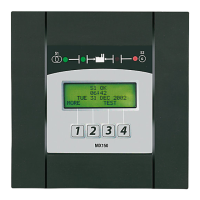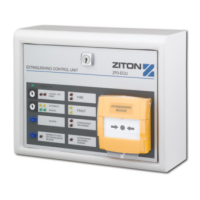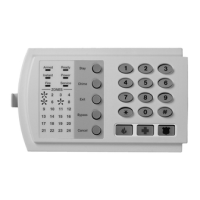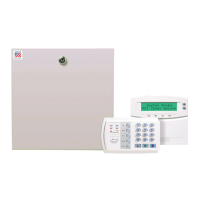ZP3 Fire Control Panel User Guide
Page 8 Revision 11 (05/01/2010)
View “Fire” alarms button
A fire alarm is the highest priority and is automatically displayed, by zone, on the LCD Display.
The top line indicates Fire Alarm, and the word “Fire” is displayed on the bottom line directly
above the common Fire indicator. If you have been viewing other types of alarm (see below), and
wish to return to the fire alarm screen, press the Fire button.
View “Fault” alarms button
Press the Fault button to view any fault alarms in the system (the common Fault indicator is
illuminated). The top line indicates Fault Alarm, and the word “Fault” is displayed on the bottom
line directly above the common Fault indicator. The alarm is displayed by zone.
View “Disabled" button
Press the Disabled button to view disabled zones (the common Disabled indicator is illuminated).
The top line indicates Disabled, and the word “Disabled” is displayed on the bottom line directly
above the common Disabled indicator. The details are displayed.
View “Other" button
Press the Other button to view any other alarms in the system (the common Other indicator is
illuminated). The top line indicates Other, and the word “Other” is displayed on the bottom line
directly above the common Other indicator. The alarm is displayed by zone or by category.
Common alarm indicators
See Figure 4. There are four common alarm indicators on the panel, they are:
• Fire
• Fault
• Disabled
• Other
These are used to indicate the presence of an alarm in four categories. The most important of
these is the Fire alarm indicator. The others draw attention to alarms of lesser importance.
Common “Fire” indicator
This indicator illuminates when any fire alarm is received by, or is currently present, in the
system. The indicator flashes for a new alarm, and becomes steady after an alarm has been
accepted. New alarms must be responded to immediately. Other indicators identify the location
of the alarm, and are described later in this document. This indicator is normally off.
Common “Fault” indicator
This indicator illuminates when any fault alarm is received by, or is currently present, in the
system. Other indicators identify the location and type of fault. Fault alarms have different levels
of severity; some may take the complete system out of operation, some may take only a small
part of the system out of operation, while others may simply report a condition that needs
attention. Refer to Types of fault on page 18 for more details. This indicator is normally off.

